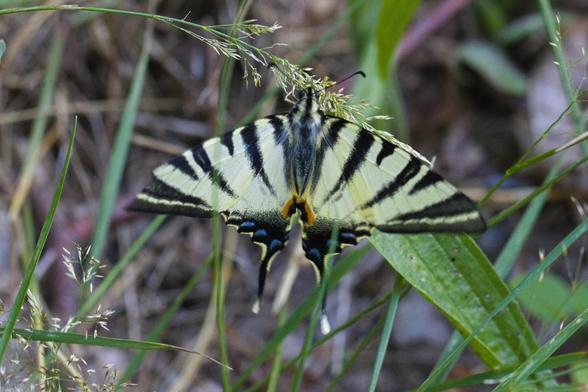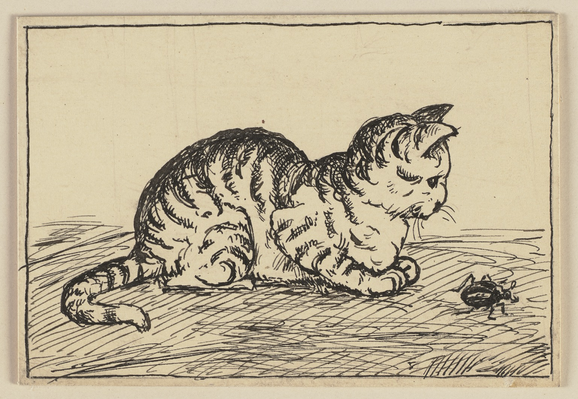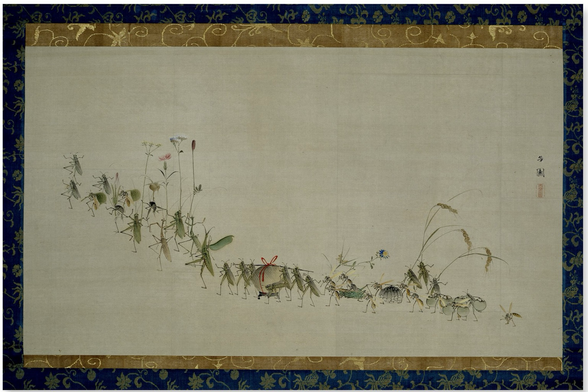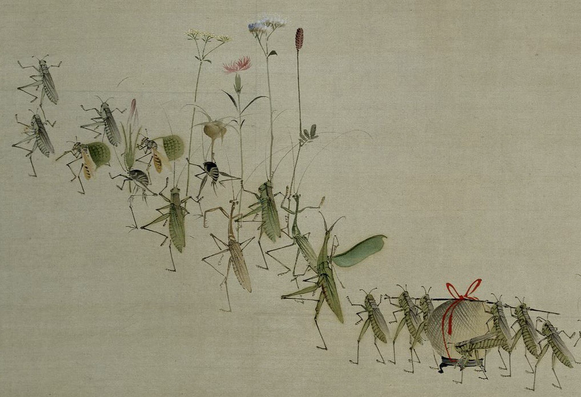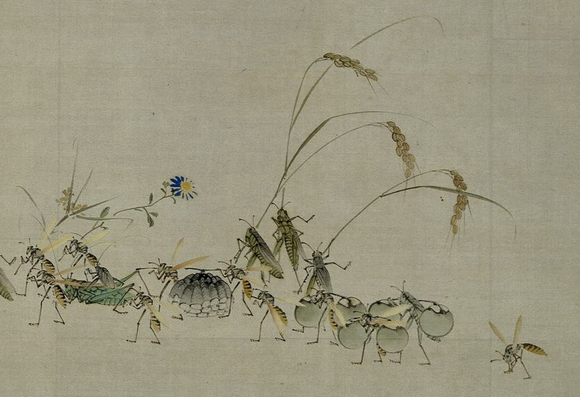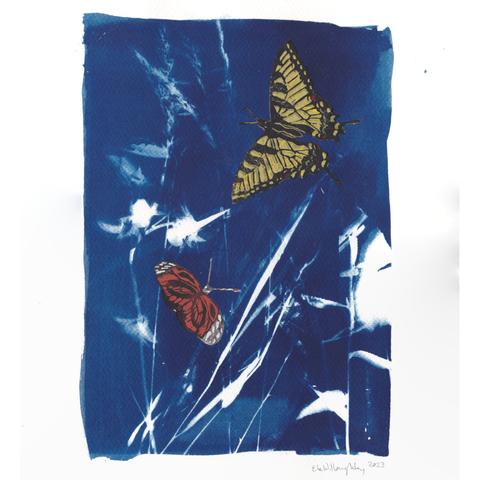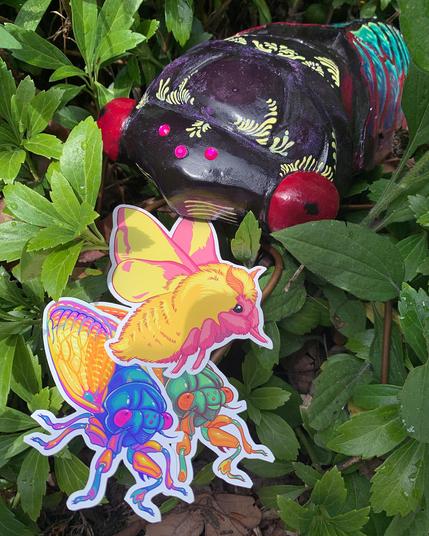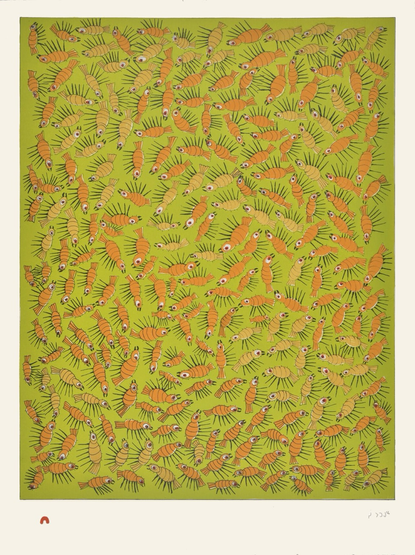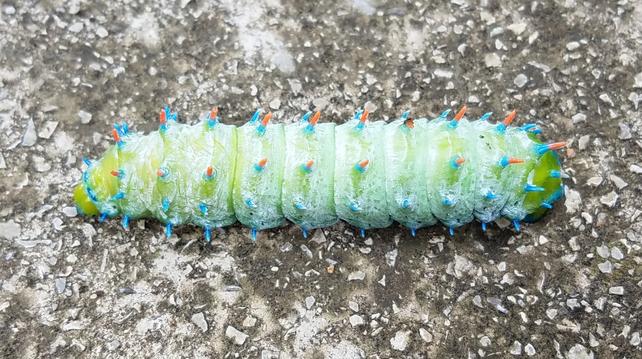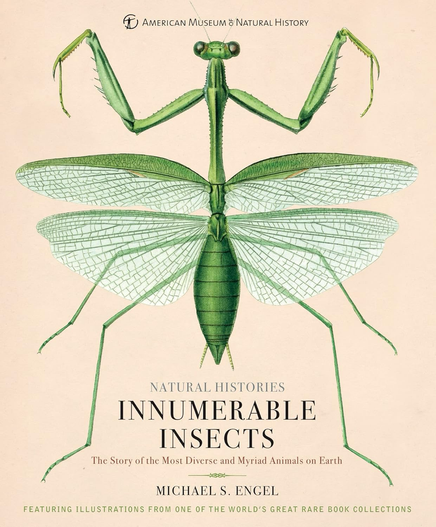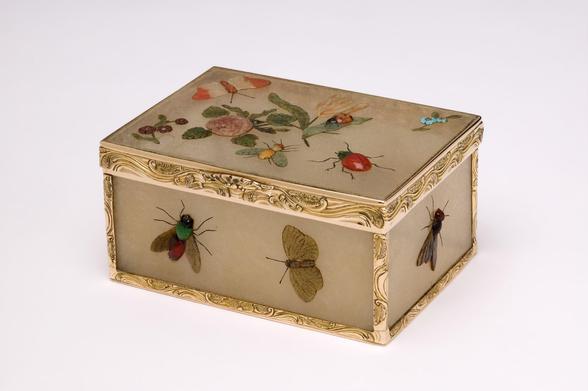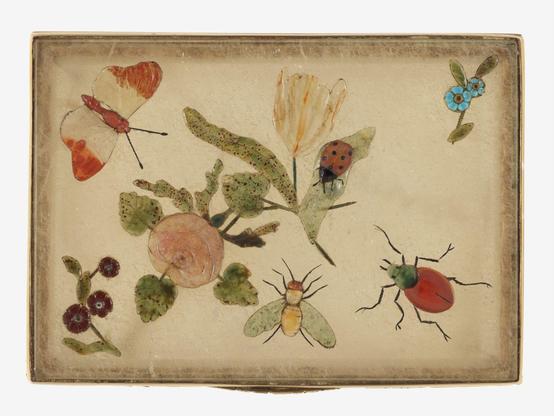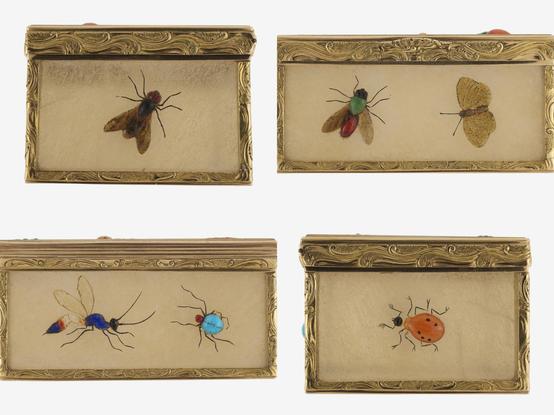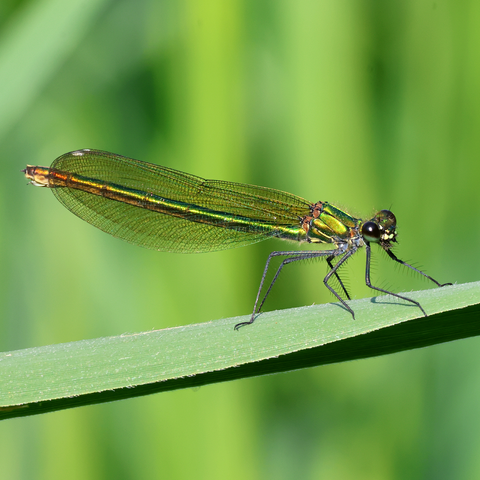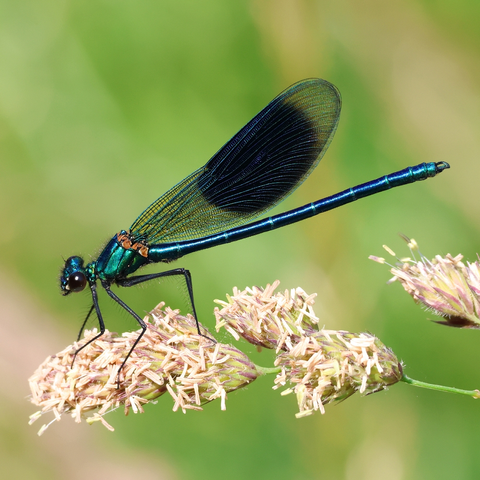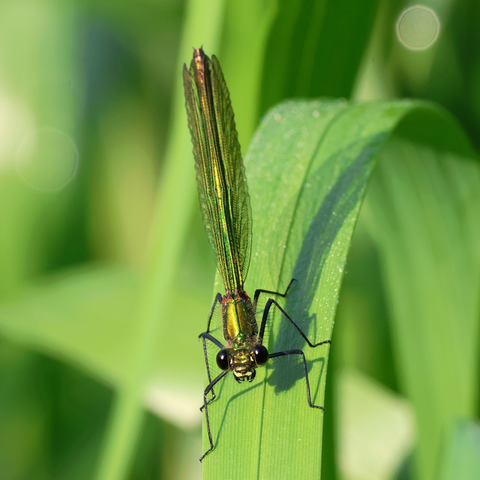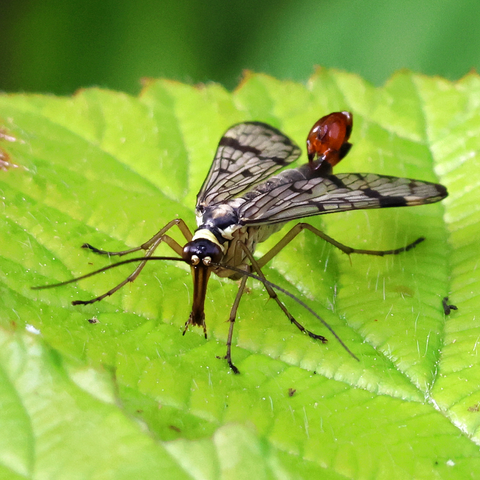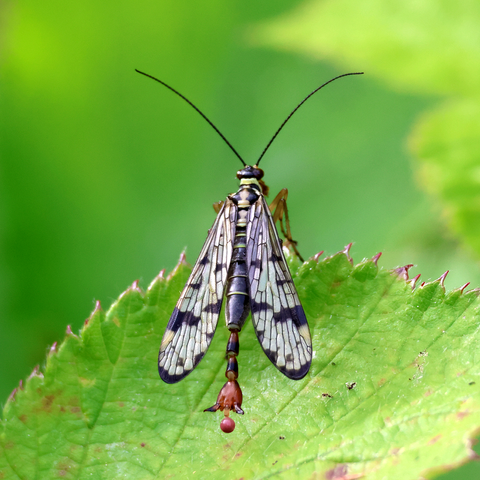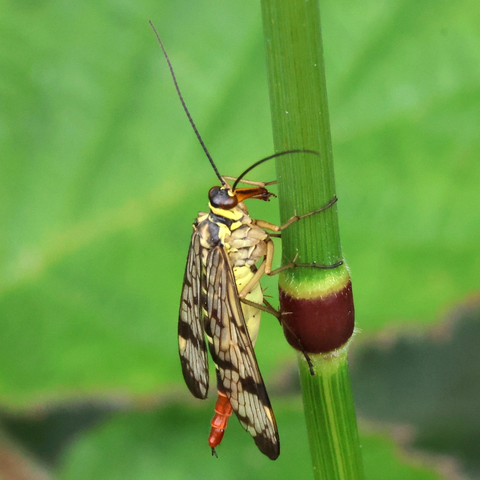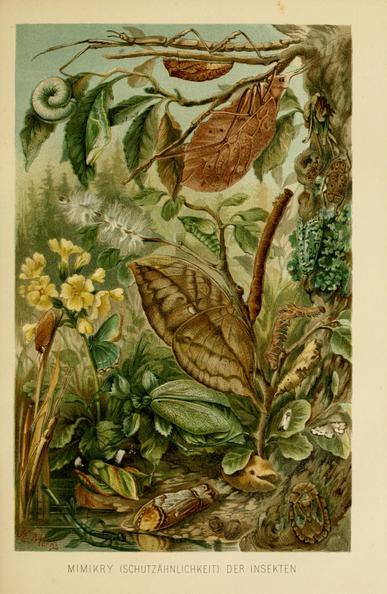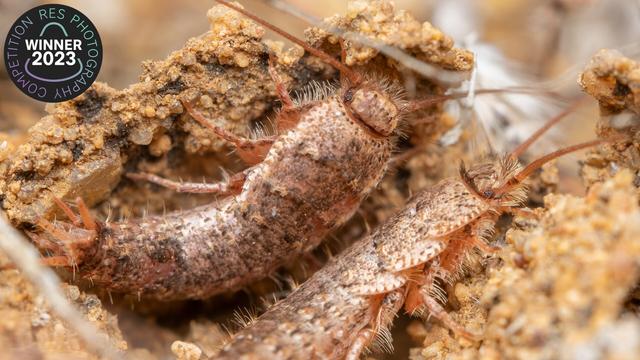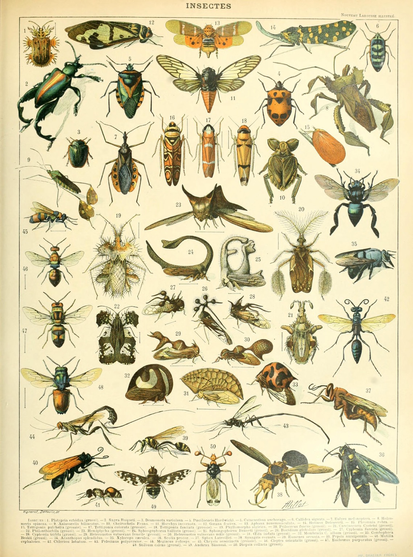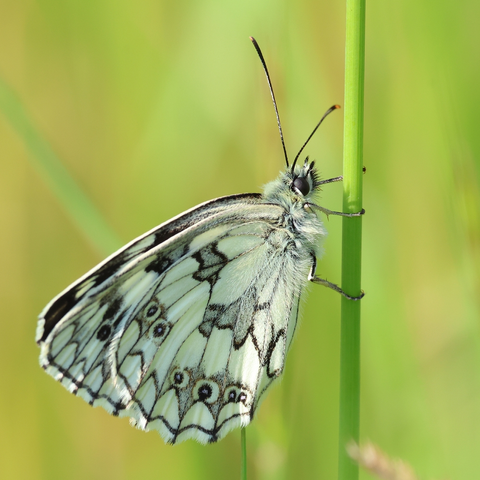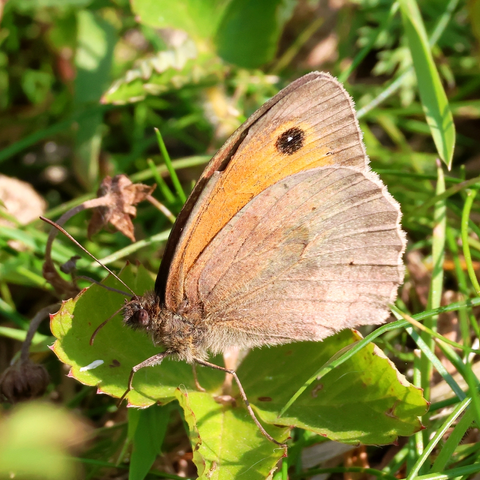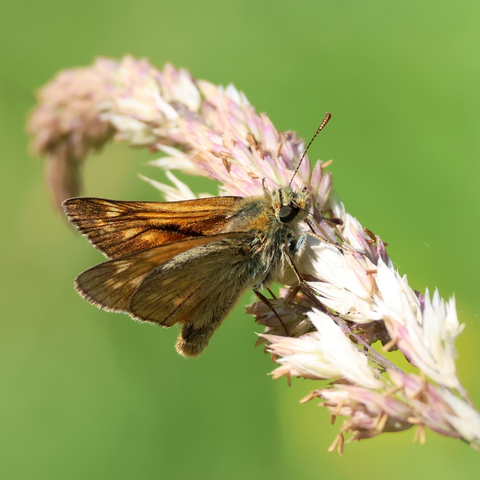Die Mosel hat heute morgen genau so eröffnet wie als ich hier das erste mal in 2022 auf dem Apolloweg war: mit einem Segelfalter. Es war noch früh, und ich entdeckte ihn im Gras.
#insectweek
#insectWeek
It's th last day of #InsectWeek! I have been remiss, so here are leafcutter ants #invertebrate #BugSky
For #Caturday during #InsectWeek :
Hans Thoma (German, 1839–1924)
Drawing for the primer: #Cat , c.1905
Pen & pencil drawing on paper, 78 x 114 mm
Städel Museum SG 2050
https://sammlung.staedelmuseum.de/en/work/drawing-for-the-primer-22
#CatsInArt
#InsectWeek
🦋🐝🐞🐜🦗🦟🪰🪲🪳🐛
Nishiyama Hōen 西山芳園 (Japan, 1804-1867)
Procession of #Insects , 1844
Silk hanging scroll painting
H 148.00 x W 109.00 cm (mounted)
British Museum 1881,1210,0.2264
https://www.britishmuseum.org/collection/object/A_1881-1210-0-2264
#JapaneseArt
This is a unique hand made cyanotype on watercolour paper (11” x 14”) with an image of grasses wildflowers with collaged lino block printed butterflies. The butterflies are both found here in Ontario: the yellow and black (with red and blue spots) Eastern tiger swallowtails (Papilio glaucus) and 🧵1/2
#linocut #printmaking #cyanotype #butterfly #insect #insectWeek #sciart #pollinator #multimedia #MastoArt
Please cw your #insect toots
I hear it's #InsectWeek and Saysay the cicada would like you all to know that I have bug-related stickers and prints available! Moths! Cicadas! Discount codes for 3 or more!
#TwoForTuesday for #InsectWeek :
Cee Pootoogook (Inuit, b.1967)
1. Mosquitoes
Cape Dorset, 2014
Lithograph, 30 x 22 1/2 in.
https://www.dorsetfinearts.com/cee-pootoogook
2. Arctic Lice
Cape Dorset, 2015
Lithograph, 30 x 22 1/2 in.
https://feheleyfinearts.com/product/arctic-lice/
#IndigenousArt #FirstNationsArt
Digging deep into my archives for a cool #InsectWeek photo. This was from my first trip to China, near the Chengjiang biota in Yunnan province. Not quite Atlas moth? Is this genus Samia?
It is #InsectWeek! Which, as many of my papers show, and @restingdinoface.bsky.social has summarized, means we are in fact celebrating crustaceans.
BUGS. IS. SHRIMPS.
🧪🦋🐝🪲🐞🦗🪳🪰🦐🦐🦐🦐
You Might Think of Shrimp as B...
#BookRecommendation for #InsectWeek :
Innumerable #Insects: The Story of the Most Diverse and Myriad Animals on Earth (2018)
“A fascinating look at the world’s most numerous inhabitants, illustrated with stunning images from the American Museum of Natural History’s Rare Book Collection.”
https://amzn.to/3W3mXFH via #AmazonAssociates
For #InsectWeek :
Snuffbox by F. L. Hoffmann (active Germany c.1760–70)
chalcedony set with hardstones, chased gold, glass
W 7.3 x H 5.3 x D 3.6 cm; 110g
Victoria and Albert Museum: https://collections.vam.ac.uk/item/O166540/snuffbox-hoffmann-f-l/
Banded Demoiselle #Damselflies at Warwickshire Wildlife Trust's Brandon Marsh on Tuesday, females with their green-bronze bodies and clear wings on the left, males with their blue-green bodies and banded wings on the right. Incredible #insects!
#InsectWeek #Nature #NaturePhotography #Wildlife #WildlifePhotography
A #Scorpionfly is a scary-looking #insect, thanks to that long, mandible-bearing 'beak' or rostrum—and of course the male's tail, which inspired the name given to these creatures. The 'stinger' is in fact a genital capsule or bulb, bearing two 'pincers' (gonostyli); it's used for mating, and for defaecation (pic 3). Females (pic 4) lack this bulb. Feeding mostly on other #insects, usually dead ones, these #minibeasts are harmless to us Humans.
For #InsectWeek: how many #insects can you find hidden in this scene? 🧐
"MIMIKRY (SCHUTZÄHNLICHKEIT) DER INSEKTEN," plate by Heinrich Morin in Brehms Thierleben, 1876 ed.
https://archive.org/details/brehmsthierlebe00breh/page/n52/mode/1up
#camouflage #mimicry #sciart
Honey bee (Apis mellifera) queen and workers on a beehive honeycomb by Maggie Umber
https://maggieumber.com/prints
#InsectWeek #WatercolorWednesday #bees #insects #mastoart #nature
Absolutely delighted that one of my photos picked up 'Specially Commended' in the Royal Entomological Society's 2023 Photo Competition!
This pair of silverfish appeared to be clinging together inside a small, clayey nest structure. Some of their brilliant silver scales have rubbed off, which may indicate moulting was about to take place. As always with macrophotography, patience was a virtue here - fortunately they both stayed put while I lined up a shot which got both silverfish’s eyes in focus!
Congratulations to everyone else who picked up wins in this year's competition. Let's all support #insectweek and show some love for the little creatures that run this world!
#Entomology #Insects #Macrophotography #InsectPhotgraphy #NaturePhotgraphy
#TwoForTuesday for #InsectWeek:
Adolphe Millot (French, 1857–1921)
“Insectes” plates for Nouveau Larousse illustré : dictionnaire universel encyclopédique, 1898 ed.
https://archive.org/details/nouveaularoussei05laro/page/296/mode/2up
Four #Butterflies in the meadows at Brandon Marsh this morning, all very active in the sunshine! Clockwise from top left: Marbled White, Meadow Brown, Ringlet, and Large Skipper.
Despite its colouration the Marbled White is, with the Meadow Brown and Ringlet, a member of the Satyrinae subfamily: the Browns. It is also one of my favourite Butterfly species!
#Insects #InsectWeek #Butterfly #Lepidoptera #Nature #NaturePhotography #Wildlife #WildlifePhotography

